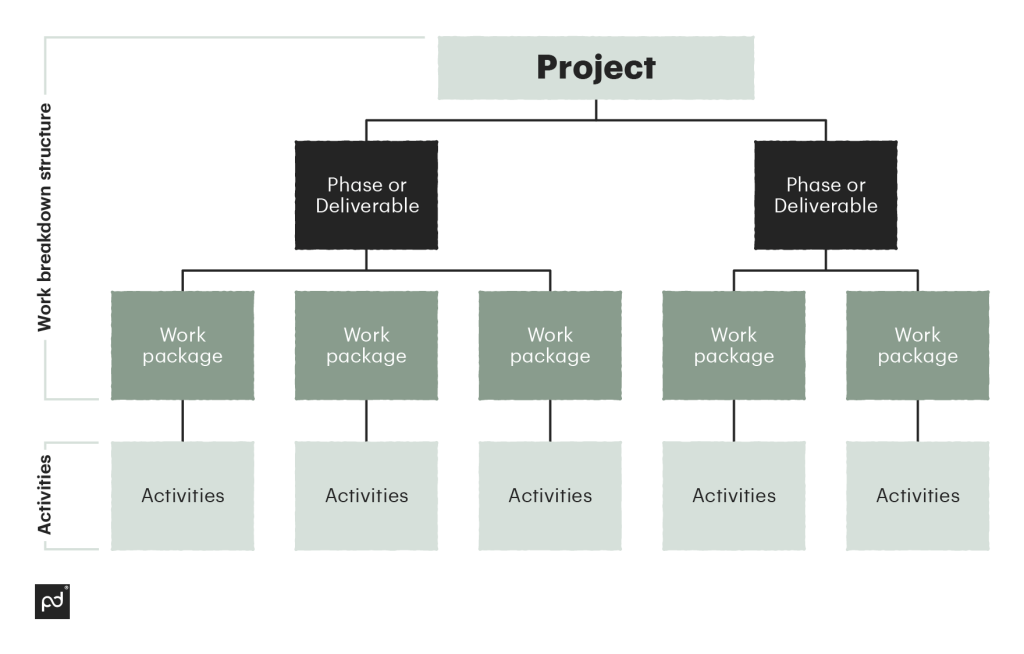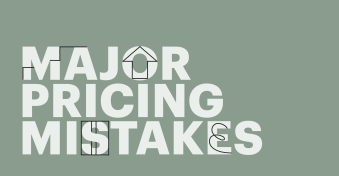There are tons of memes showing the huge difference between client price expectations and the budgets they really have.
All of them are tied to the fact that clients expect to see something gorgeous and epic but they’re ready to pay for something far less massive and good.
Here are some examples to help visualize such comparisons in context:
- Infinity Gauntlet of Thanos vs. Household rubber glove with plastic costume jewelry put on
- A dragon from “Game of Thrones” vs. The Lonely T-Rex
- Petronas Twin Towers in Malaysia vs. Two boiled corn cobs on a bamboo stick.
In case you haven’t seen any of these memes and these visuals don’t resonate with you, that’s all the more reason for you to read this article!
What are client expectations and why is it important to align them with the project budget?
Let’s start with definitions to assure we’re on the same page here.
First of all, we’re now speaking about any project work — any set of activities with no clear workflow and focus on the desired outcome. As a result, such activities have no established prices.
So, client price expectation is the subjective opinion your client has on the price the certain project should cost.
Such an opinion is usually based on a casual and simplified view of the problem. This is one side.
Another side is the real cost of the project, which includes many different factors and will be more or less closely estimated rather than accurately evaluated before the project starts.
Even in the simplest projects there is a place for risks, and something can go south, and expenditures will rise.
That’s why the client’s expectation is almost always far below the real budget required for the project to be launched.
And the better they are aligned with each other, the closer the project is to its successful implementation.
In this case, it is necessary to bring expectations closer to the budget, and not vice versa.
Negative consequences of under-budgeting cost
What happens when the budget veers toward expectations? In a few words, nothing good:
- Profitability drops or even goes negative. The contracting team loses its profits, which results in reduced motivation and quality of outcomes.
- Insufficient resource allocation. If the cost is underestimated, you cannot spend enough resources to achieve the goals of the project.
- Wrong and potentially harmful decisions. With inaccurately estimated costs, there is a high risk of making incorrect decisions based on biased data.
Project budget: essential factors
What the expectation fully depends on the mindset of a stakeholder.
Let’s explore the key factors forming the budget of any project, and how to make budgeting far more controllable.
Project triangle basics
The model describing different constraints of project management is called a project management triangle.

In a nutshell, the model shows a strong correlation among four main factors — scope (what the project is supposed to accomplish; an amount of work), cost (where our budget lies), time (in a sense of required work duration), and quality (how well or full the previously declared scope is executed).
The first three factors are the corners of the triangle; the last one is placed in its center.
The sense of the model is quite simple: all the constraints are closely tied, and once you start changing any one of them, the others will be changed, too.
At the same time, their superposition of them will keep unchanged. In other words, if you want to cut the cost, you must either decrease the scope, increase the time, or drop the quality.
An evolved project management triangle model offering in PMBOK, starting from 4.0, includes two different triangles:
Input-output triangle:
- Scope
- Cost
- Time.
Process triangle:
- Risk
- Quality
- Resources.
We can note that the term “quality” refers not just to an output only, but also as another integral factor that could be changed.
Now, let’s talk about each factor separately.
Scope
As we said before, the scope is a measure of what the project’s encompasses:
- A list of features must be implemented for the software development project
- A length and scenario details for the video shoot
- A number of citations or posts related to a certain news item for a PR project, etc.
In most cases, it is convenient to measure the scope in the man-hours required to handle it.
For example, an average scope for a simple native mobile application is 200-300 man-hours — and a more complex application can easily rack up thousands of man-hours.
It’s obvious that it’s impossible to build a skyscraper with the help of just one mason within a single day.
But it isn’t so evident for customers if we speak about digital projects.
Cost
First, the cost depends on the total amount of man-hours that must be paid.
Next, it includes all the additional spending — contractors’ profits, taxes, infrastructure expenditures, etc.
It’s clear that a team of developers, a film production team, or any other working group will deny laboring for less than they are previously used to working.
That’s why it’s impossible to build something Facebook-scale for just a couple of bucks, even if you have thousands of years ahead of you.
Time
Scheduling definitely affects other triangle parameters, but with some reservations:
- It’s almost always unable to balance a multifold drop in budgeting just stretching the schedule — this resource is rather limited.
- In turn, with the time-limited, the cost grows faster in a nonlinear sense.
- The more time a workgroup has, the better max quality they can achieve.
As you can see, the correlation isn’t direct but rather significant.
Quality
As we said, quality is an integral part affected by both the other triangle parameters as well as certain indirect factors.
Some say that quality is an extension of previous experience but we don’t think so. Experience is one of the integral factors, but not the only one.
Let’s unscramble it with an example.
In video production, experience is a more influential factor; conversely, once in the software development field, the list of required QA activities makes matters far more.
Adding these QA activities, you’re increasing your scope in order to increase quality.
And choosing a team with the right experience isn’t about increasing the scope. Your costs, however, increase in both cases.
As you can see, cost estimation is quite challenging and often inaccurate. Let’s find out how to make it less chaotic and more efficient.
Steps for efficient budgeting
Here are the steps on how to approach the budgeting of your project efficiently. Before starting, it’s necessary to add some words.
The steps described below can be considered simple and easy. But don’t think they’re so easy that you can handle all the steps with just a sheet of paper.
It’s highly important to start with the right toolset if you want to succeed at reaching the finish line.
You can use different kinds of software that cover similar features required in your budgeting journey.
PandaDoc, for example, has everything for a fast start, including this free project budgeting proposal template, as well as a 14-day free trial.
Step 1. Develop a work breakdown structure (WBS)
WBS is a smart way to deconstruct the project. Smart means keeping the hierarchical structure and making it friendly for the implementation team.

Each part you’re dividing your project into must be atomized (it shouldn’t require being broken down further), fully understandable for the team, has all the required details, and is ready for implementation.
And yes, the S.M.A.R.T concept, no matter how much it is about goals, can be applied here, too.
Write down your deconstructed list of tasks that must be closed within the project.
Now, it isn’t just something like “Build me a house” but “Dig a pit, then lay a foundation…”.
You can analyze each point and understand whether it is segmented and detailed enough, and then fix all the flaws.
Step 2. Estimate each task separately
Although there are various estimation techniques, the bottom-up approach fits best when you don’t have a lot of experience in running such projects.
Carefully determine the price for each sub-task, and be prepared to dedicate significant time.
The more granular and reliable data you have, the more confident you’ll be in backing your position that “no, we won’t be able to develop the next Google for $1,000.00.”
Step 3. Sum up
Calculate the sum of your estimations from the previous step.
The situation becomes more and more clear at this stage, doesn’t it?
Step 4. Add up taxes, extra fees, and risks
The cost contains much more than just all the tasks added up.
It also includes previously mentioned operational costs, such as taxation. And the profits, of course!
A good rule of thumb is to add up a 10% contingency buffer so that you are covered against unexpected events and need to make minor adjustments.
And avoid low-balling with your actual budget — lucrative customers always value quality.
Step 5. Align with customers
Stay completely transparent and open to discussions and revisions before the project’s rollout.
Consider agreeing that the first milestone will be seen as a testing ground for you to determine how continued collaboration works.
We’ll cover the communication question below in a separate block.
Step 6. Execute with regular reviews
Consider using an effective budgeting system that will allow you to generate in-depth reports automatically.
How to align: communication is a core
The most important part of successful alignment between the client’s expectations and their budget is communication.
You should share all the results of your findings with the customer.
Be ready to answer any related questions. Each change must be processed openly for both parties’ benefit.
You can streamline your communication process using the right contract negotiation software. PandaDoc, for example, offers collaborative workspaces coupled with advanced tracking tools.
Here you can also find third-party integrations with Slack and other messaging software to expand the number of available communication channels.
The more you communicate with the customer, the lower the chances are that they will meme-haunt you.
Final words
As you can see, the client price expectation and the reality of the budget are two completely different entities in most cases.
And your primary aim is to know how to align them efficiently.
By using this short guide of ours, you’ll be better prepared to succeed in doing so!
- How to Create a Project Budget Proposal
- How to Negotiate a Contract Like a Boss
- Painless and Profitable: Our Guide on Winning at Price Negotiation
- Contract Negotiation Help Center
Disclaimer
PandaDoc is not a law firm, or a substitute for an attorney or law firm. This page is not intended to and does not provide legal advice. Should you have legal questions on the validity of e-signatures or digital signatures and the enforceability thereof, please consult with an attorney or law firm. Use of PandaDocs services are governed by our Terms of Use and Privacy Policy.


